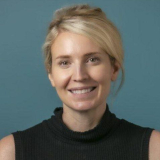In 2015, Fast Company wrote a trend piece called Welcome To The Brave New World Of The Corporate-Sponsored Artist. They covered the newly formed Amtrak residency, Autodesk’s legendary Pier 9 residency and Facebook’s mysterious commissioning “residency” which is by no means a residency and just a way to build a corporate collection for cheap. It’s an article that assures us of the great benefits received by artists who are used as PR vehicles and generators of social media content that feels good to like and follow.
My personal skepticism around corporate-adjacent residencies like the Amtrak residency, which has since transformed into a social media residency divorced from any project goal and now open to “creatives, introverts, families, survivors, retirees”, revolves around the deletion of the communal element of the residency experience in favor for what is effectively poorly paid, independent contractor work. At the same time, technology residencies like Autodesk’s have venerable goals, exposing artists to cutting edge technology so both the artist and the technology can grow in technique and application, respectively. In the spirit of openness, Autodesk’s only requirement of artists is that they translate their work into instructables which are hosted online and can be used by anyone. But these kinds of residencies centered on technological experimentation within a corporate setting are few and far between. Within this rare niche of altruistic, tech-based residencies is an even smaller subset: the BioArt residency.
BioArt is a growing field in contemporary art and a crucial one to maintain critical engagement with the kind of bioengineering that is transforming humanity’s ability to sustain larger populations and ultimately change and shape who we are as a species. Some artists like Heather Dewey-Hagborg, for example, have explored how histories of power, race, and incarceration, are being rewritten into the nascent fields of genetic surveillance. Dewey-Hagborg completed the Science Center BioArt Residency at Integral Molecular in January 2019 where she created a retrovirus that can infect its host with a gene to produce more oxytocin, the hormone associated with falling in love, prompting a critical examination of one of the most fundamental human experiences. The project, Lovesick, would be impossible to do without the professional laboratory equipment and expertise available at these kinds of institutions. Integral Molecular founded the residency in 2017 in collaboration with University City Science Center in Philadelphia and received $50,000 in grant support from the John S. and James L. Knight Foundation to fund its 2018 program with three artists.
Ginkgo Bioworks, an established Boston-based bioengineering firm that specializes in using biological processes to produce molecules for industrial applications, just recently closed their third open call for The Ginkgo Creative Residency. Their three-month residency is well-funded ($5k a month), and the structure is open and collaborative without relying on outside funding. Their most recent resident, designer Yasaman Sheri praised the residency team headed by Creative Director, Christina Agapakis. Sheri was welcomed onto the team, shared workspace with the bioengineers of Ginkgo and was guided to the people who could work with her in exploring the science necessary to complete her project.
Bioengineering organisms like yeasts to produce useful enzymes, flavor compounds, and even cannabinoids (hence the sudden ubiquity of CBD-everything) using CRISPR-Cas9 technology has been lauded as the most transformative technology of the last decade and truly it opens up a wide range of possibility in genetic manipulation and biological production of organic compounds. Sheri used her time at Ginkgo Bioworks to explore the materiality of biological interaction by working with biosensors and embedding cell-free systems in paper to create an object that responded to the biological stimuli of its environment. This biosensor experimentation, again, could not have been done outside of the supportive and equipped environment provided by Ginkgo Bioworks.
Speaking to Sheri at the end of her residency, she shared that perhaps the most fruitful knowledge she gained from the experience was the development of a meaningful language to speak across the fields of art, design, and bioengineering. To communicate with scientists, the designer had to build metaphors that could cross the technical divide to find common ground in the philosophical. Sheri said, “We have this notion that we can control nature, that it’s like electronics, a computer, inputs, and outputs and it’s easy to make computational analogies, and for the most part you can create basic systems that you can control, but in nature, you can really only tune things. Nature can’t be used, we have to work with it.”
This concept is familiar to artists. Any material has restraints that must be negotiated with in the act of creation and BioArt is no different. During her time at Ginko, Sheri led a workshop to share how artists and designers approach, imagine, and sketch multiple futures. This cross-pollination of fields of inquiry and the opportunity to interject the possibility inherent in creative engagement with the biological builds a strong case for what I hope will become a new trend in residencies: the BioArt residency.
